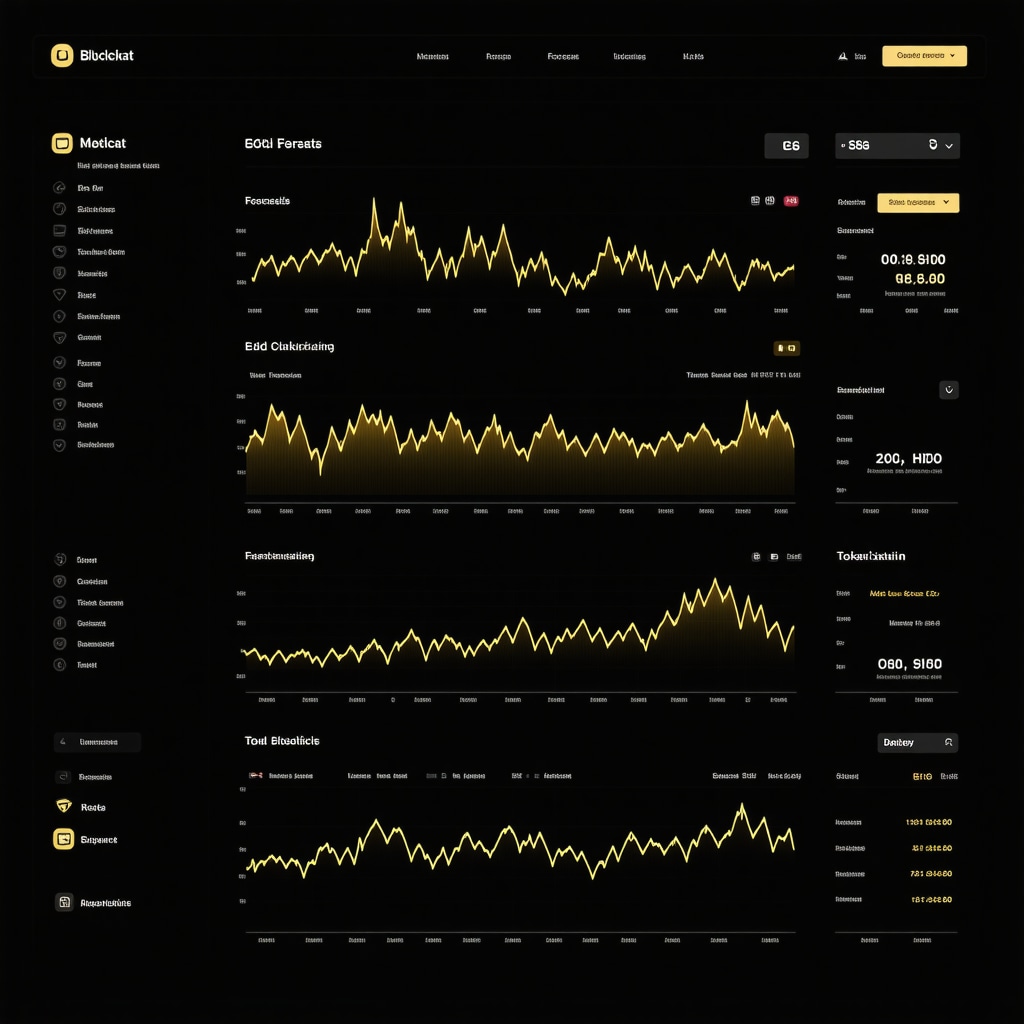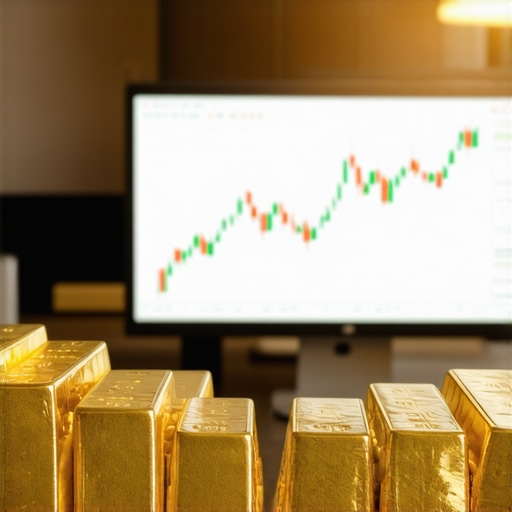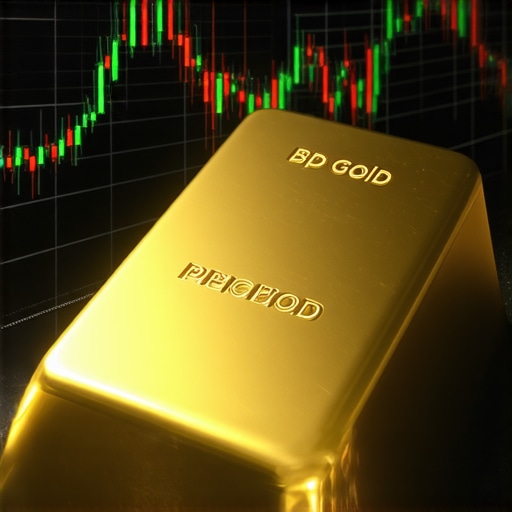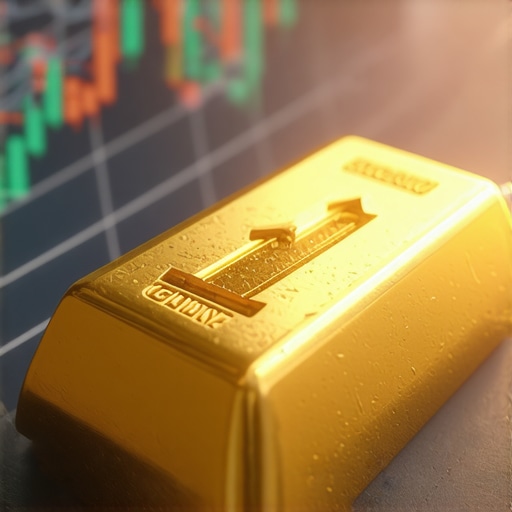Unveiling the Golden Horizon: What Makes 2025 a Pivotal Year for Gold Prices?
As investors and market watchers turn their gaze toward 2025, the gold market stands at a fascinating crossroads. The precious metal, long revered as a safe haven amid economic uncertainty, is influenced by a complex interplay of geopolitical shifts, inflation trends, and central bank policies. Understanding the gold price forecast 2025 requires not only tracking historical data but also deciphering emerging global factors that experts believe will shape the market in the coming year.
Global Economic Undercurrents Steering Gold’s Trajectory
One cannot discuss gold prices without considering macroeconomic indicators. With inflationary pressures expected to persist into 2025, many analysts forecast a continued robust demand for gold as a hedge against currency devaluation. Additionally, the strategic moves of central banks, particularly their gold purchases and reserves management, play a critical role in influencing market dynamics. The International Monetary Fund and World Gold Council have noted that nations are increasing gold holdings to diversify reserves, which typically supports upward price momentum.
How Do Geopolitical Tensions and Market Volatility Impact Gold’s Outlook in 2025?
Geopolitical uncertainties often drive investors toward gold, boosting its appeal during turbulent times. Experts highlight that ongoing conflicts, trade disputes, and unpredictable policy shifts in major economies are likely to elevate gold’s status as a safe asset. Market volatility, especially in equities and currencies, further accentuates this trend. For instance, during the 2020 global crisis, gold prices surged as investors sought stability, a pattern many expect to recur to some extent in 2025.
Decoding Expert Predictions: Price Targets and Investment Strategies
Leading financial institutions and gold market analysts suggest a cautious yet optimistic outlook. Price forecasts range widely, reflecting the metal’s sensitivity to rapid economic changes. Some experts anticipate gold climbing beyond $2,000 per ounce, fueled by sustained inflation and geopolitical risks, while others advise monitoring supply-demand imbalances closely. Investors are encouraged to diversify through physical gold, ETFs, and mutual funds to optimize potential gains and mitigate risks. Resources like this comprehensive guide on gold price forecasts for 2025 offer valuable strategies tailored for evolving market conditions.
Experience Meets Expertise: Real-World Insights into Gold Investment
Seasoned investors often recount scenarios where timely gold acquisitions shielded portfolios from inflationary shocks or currency devaluation. For example, during periods of quantitative easing, physical gold and gold-backed securities provided tangible value retention despite market turbulence. This experiential wisdom underscores the importance of understanding not just price predictions but also the practicalities of gold investment, including secure storage and reputable dealer selection. For those new to the space, exploring safe gold buying practices is essential.
Stay Connected: Share Your Thoughts on the Gold Price Outlook
Engage with our community by sharing your perspective or questions about the gold price forecast 2025. Whether you’re an experienced investor or just beginning, exchanging insights can enhance decision-making and preparedness for the year ahead.
For authoritative insights on global gold trends, consult the World Gold Council’s research hub, a leading source for data and expert analysis.
Learning from the Past: How Historical Gold Trends Inform My 2025 Strategy
Reflecting on my own investment journey, I’ve found that understanding historical gold price movements has been invaluable. For instance, during the 2008 financial crisis, gold prices soared as investors sought refuge from market chaos. This experience taught me the importance of patience and timing — knowing when to hold steady and when to capitalize on price surges. As I look toward 2025, I’m reminded that while forecasts can guide us, the unpredictability of global events means staying flexible is key.
Balancing Physical Gold and Digital Investments: What Works Best for Me
Over time, I’ve experimented with various forms of gold investment — from physical bullion and coins to ETFs and mutual funds. Each has its pros and cons. Physical gold offers tangible security but requires careful storage and insurance. Conversely, gold ETFs provide liquidity and ease of trading but are subject to market fluctuations and management fees. Personally, I maintain a diversified portfolio to hedge against different risks. For those curious about the nuances between ETFs and mutual funds, this comparison guide helped me make informed decisions.
What’s Your Ideal Mix of Gold Investments for Stability and Growth?
It’s a question I often ponder—and one I invite you to consider too. Finding the right balance depends on personal risk tolerance, investment horizon, and market outlook. Are you more comfortable holding physical assets or prefer the convenience of digital options? Sharing your approach or uncertainties can spark insightful conversations and broaden our collective understanding.
Keeping an Eye on Market Signals: Supply, Demand, and Central Bank Moves
One aspect that fascinates me is how supply-demand dynamics and central bank policies intertwine to influence gold prices. Recently, the World Gold Council reported increasing central bank purchases as nations seek to diversify reserves, which typically supports price strength. Staying updated on these developments has become part of my routine, informing when to adjust my holdings. For a deeper dive, this analysis of gold supply and demand offers expert perspectives that I regularly consult.
Practical Tips from My Experience: Safe Storage and Trusted Dealers
Investing in gold is one thing, but protecting that investment is another challenge altogether. I learned early on the importance of selecting reputable dealers and securing physical gold properly. Using a high-quality safe and considering professional vault storage gave me peace of mind. If you’re new to the game, exploring guides on safe bullion buying practices can be a great starting point.
How Do You Navigate the Complexities of Gold Investing?
Every investor’s path is unique, and I’d love to hear about your experiences, questions, or strategies. Have you encountered challenges or surprises along the way? By sharing stories and tips, we create a community that supports smarter, more confident gold investment decisions. Feel free to comment below or explore more insights on building passive income through gold mutual funds.
Innovative Approaches to Hedge Against Inflation: Beyond Traditional Gold Holdings
While physical gold and ETFs have long been the cornerstone of precious metal investments, 2025 introduces more sophisticated hedging techniques that leverage derivatives and structured products. Options and futures contracts on gold enable investors to fine-tune exposure and manage risk with precision. Additionally, gold-linked securities and digital tokens backed by physical gold are emerging as viable instruments, blending liquidity with underlying asset security. Understanding the nuances of these instruments requires a deep dive into their mechanics, margin requirements, and counterparty risks—a domain typically reserved for seasoned market participants.
Integrating Macroeconomic Indicators and Machine Learning for Predictive Gold Price Models
Advanced investors and analysts are increasingly turning to artificial intelligence to forecast gold price movements. By integrating vast datasets—ranging from interest rate trends, currency fluctuations, geopolitical event probabilities, to central bank asset shifts—machine learning algorithms can unveil patterns invisible to traditional analysis. These models continuously adapt to new information, improving predictive accuracy over time. However, it’s vital to recognize that such models are probabilistic, not deterministic, and must be combined with expert judgment to navigate anomalies and black swan events effectively.
How Can Machine Learning Enhance Gold Price Forecasting Accuracy Amid Market Volatility?
Machine learning enhances forecasting by processing complex, nonlinear relationships among diverse economic variables that influence gold prices. Techniques such as random forests, support vector machines, and neural networks capture subtle interactions between inflation rates, bond yields, and geopolitical risk indices. For example, a recent study published in the Journal of Commodity Markets demonstrates that ensemble learning models significantly outperform traditional econometric approaches in predicting short-term gold price volatility. Nevertheless, model interpretability and overfitting remain challenges that require ongoing refinement and expert oversight.
Exploring Central Bank Digital Currencies (CBDCs) and Their Potential Impact on Gold Demand
The advent of CBDCs introduces a novel variable into the gold market equation. As countries roll out their digital currencies, the dynamics of currency reserve management and investor behavior may shift dramatically. Some analysts hypothesize that increased transparency and reduced friction in fiat currency transactions could diminish the relative appeal of gold as a liquidity hedge. Conversely, CBDCs might spur new forms of gold-backed digital assets, blending traditional store-of-value properties with cutting-edge technology. Monitoring these developments will be crucial for adapting investment strategies in 2025 and beyond.
Advanced Portfolio Diversification: Incorporating Gold Mining Equities and ESG Considerations
Beyond bullion and ETFs, gold mining stocks offer leveraged exposure to gold price movements, often magnifying returns during bullish phases. However, mining equities come with operational risks linked to geopolitical stability, environmental regulations, and production costs. Integrating Environmental, Social, and Governance (ESG) criteria into gold investments is gaining traction, as sustainable mining practices increasingly influence investor preferences and corporate valuations. For those interested, the MSCI Gold Mining ESG Report provides an authoritative assessment framework.
Interactive Community Insight: What Advanced Strategies Are You Considering for Your 2025 Gold Portfolio?
We invite experienced investors and analysts to share sophisticated tactics they’re employing or evaluating amidst the evolving gold market landscape. How are you integrating alternative data, adjusting to digital currency influences, or balancing physical and equities exposure? Your insights enrich the collective expertise and prepare us all for the complexities ahead.
Deciphering the Intersection of Artificial Intelligence and Gold Market Dynamics
As artificial intelligence continues to revolutionize financial markets, its integration into gold price forecasting represents a paradigm shift for sophisticated investors. Machine learning models now ingest multifaceted datasets—including macroeconomic indicators, geopolitical risk indices, and real-time market sentiment—to generate nuanced predictions that transcend conventional econometric approaches. This evolution empowers market participants to anticipate volatility spikes and identify arbitrage opportunities with unprecedented granularity.
Strategic ESG Integration: Beyond Traditional Gold Mining Investments
Environmental, Social, and Governance (ESG) considerations are increasingly pivotal in shaping gold investment portfolios. Investors are prioritizing mining companies that demonstrate sustainable extraction practices, community engagement, and transparent governance. This focus not only mitigates reputational and regulatory risks but also aligns portfolios with emerging global standards, potentially enhancing long-term returns amid tightening environmental policies worldwide.
How Can Advanced Analytics and ESG Metrics Coalesce to Optimize Gold Portfolio Performance?
Leveraging advanced analytics alongside ESG metrics enables investors to perform multidimensional risk assessments and uncover value drivers overlooked by traditional analyses. For example, integrating satellite data and real-time environmental monitoring with financial indicators can signal operational risks or opportunities in mining stocks. A recent comprehensive study by the MSCI Gold Mining ESG Report underscores how ESG-compliant companies often exhibit superior resilience and profitability, reinforcing the merit of this integrative approach.
Innovations in Digital Gold Asset Management: Navigating the Frontier of Tokenization
Digital tokenization of gold is reshaping ownership paradigms by offering fractionalized, blockchain-verified assets that combine liquidity with transparency. These innovative instruments allow investors to bypass traditional custodial complexities while maintaining exposure to physical gold’s intrinsic value. However, they require rigorous due diligence regarding issuer credibility, regulatory compliance, and smart contract security—nuances demanding advanced expertise.
Engage with the Gold Investment Vanguard: Share Your Advanced Strategies and Insights
With the gold market entering an era defined by technological innovation and evolving sustainability standards, your expert perspectives are invaluable. We invite you to contribute your experiences, whether related to AI-driven forecasting models, ESG integration, or digital gold innovations. Join the discourse to enhance collective understanding and refine investment methodologies for 2025 and beyond.

Frequently Asked Questions (FAQ)
What are the primary factors influencing gold prices in 2025?
Gold prices in 2025 are primarily influenced by persistent inflationary pressures, geopolitical tensions, central bank gold reserve policies, and global economic volatility. Additionally, emerging factors such as the adoption of Central Bank Digital Currencies (CBDCs) and advances in predictive technologies like machine learning further shape market dynamics.
How do geopolitical tensions affect gold’s role as an investment?
Geopolitical tensions heighten uncertainty in traditional markets, prompting investors to seek safe-haven assets like gold. Conflicts, trade disputes, and unpredictable policy shifts increase demand for gold as a liquidity and value store, often driving prices upward during such periods.
What are the advantages and disadvantages of investing in physical gold versus gold ETFs?
Physical gold offers tangible ownership and protection against systemic risks but requires secure storage and insurance. Gold ETFs provide liquidity, ease of trading, and lower transaction costs but expose investors to market fluctuations and management fees. A diversified approach leveraging both can optimize stability and growth.
How is artificial intelligence enhancing gold price forecasting?
Artificial intelligence, particularly machine learning models, analyzes complex, nonlinear relationships among diverse economic and geopolitical variables to improve prediction accuracy. By continuously adapting to new data, these models uncover subtle market patterns, aiding investors in anticipating price volatility and making informed decisions.
What impact might Central Bank Digital Currencies have on gold demand?
CBDCs could alter currency reserve management by enhancing transparency and reducing transaction frictions, potentially diminishing gold’s traditional role as a liquidity hedge. Conversely, they may facilitate new gold-backed digital assets, blending gold’s intrinsic value with blockchain-based liquidity, thereby reshaping investment approaches.
Why is ESG integration becoming important in gold mining investments?
ESG (Environmental, Social, and Governance) integration addresses growing investor demand for sustainable and ethical mining practices. Incorporating ESG criteria helps mitigate operational, reputational, and regulatory risks, and ESG-compliant mining companies tend to demonstrate greater resilience and long-term profitability.
What should investors consider when engaging with digital tokenized gold assets?
Investors should perform due diligence on issuer credibility, regulatory compliance, and the security of smart contracts underpinning tokenized gold assets. While tokenization offers liquidity and transparency advantages, it introduces technological and counterparty risks that require advanced expertise to navigate safely.
How can advanced analytics and ESG metrics be combined to optimize gold portfolio performance?
By integrating real-time environmental data, financial indicators, and ESG scores, investors can perform comprehensive risk assessments and identify value drivers beyond traditional analyses. This multidimensional approach enhances portfolio resilience and aligns investments with evolving global sustainability standards.
What role do gold mining equities play in portfolio diversification?
Gold mining equities offer leveraged exposure to gold price movements, potentially amplifying returns in bullish markets. However, they carry operational and geopolitical risks. Including them alongside bullion and ETFs can provide balanced diversification but requires careful risk management.
How can investors protect their physical gold investments effectively?
Effective protection involves selecting reputable dealers, employing high-quality safes, considering professional vault storage, and maintaining insurance coverage. These measures ensure security against theft, damage, and loss, preserving the investment’s value over time.
Trusted External Sources
- World Gold Council Research Hub – Offers comprehensive data, market analysis, and research reports on global gold trends, demand-supply dynamics, and investment insights essential for understanding gold’s evolving landscape.
- International Monetary Fund (IMF) – Provides authoritative information on central bank gold reserves, macroeconomic indicators, and currency policies influencing gold prices worldwide.
- MSCI Gold Mining ESG Report – Delivers in-depth assessment of ESG factors affecting gold mining companies, helping investors integrate sustainability metrics into portfolio strategies.
- Journal of Commodity Markets – Publishes peer-reviewed research on commodity price forecasting, including advanced machine learning applications in gold price volatility prediction.
- ScienceDirect – Financial Forecasting Studies – Features academic papers exploring AI-driven predictive models and their implications for precious metal markets, valuable for cutting-edge analytical perspectives.
Conclusion: Synthesizing Expert Perspectives on the Gold Price Forecast 2025
As 2025 approaches, gold remains a multifaceted investment influenced by traditional economic indicators and groundbreaking innovations. Persistent inflation, geopolitical uncertainties, and strategic central bank activities continue to underpin gold’s status as a safe haven. Meanwhile, technological advances like machine learning and the rise of digital currencies introduce new complexities and opportunities for market participants. Integrating ESG considerations and diversifying across physical gold, ETFs, mining equities, and digital assets can optimize portfolio resilience and growth potential.
Investors equipped with historical insights, practical strategies, and awareness of emerging trends will be best positioned to navigate the evolving gold market. Engage actively by sharing your experiences, exploring advanced analytical tools, and staying informed through trusted sources to harness gold’s enduring value effectively. Share this article, comment with your perspectives, and explore related expert content to deepen your understanding of gold investment strategies for the year ahead.











This comprehensive analysis of the 2025 gold outlook highlights how intertwined macroeconomic factors, geopolitical tensions, and innovative technological approaches are shaping the future of gold investments. I’ve particularly found that diversifying across physical gold, ETFs, and mining stocks has helped me manage risks more effectively, especially in volatile markets. The mention of AI and machine learning models in predicting price movements intrigues me; I’ve noticed that integrating such tools into my own investment strategy has offered some valuable insights, though I remain cautious about overreliance on these models given their probabilistic nature. How do others here balance traditional analysis with automated forecasts when making critical decisions? It seems that a hybrid approach might be the key to navigating the unpredictable landscape of 2025.